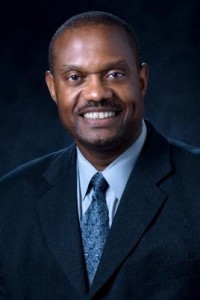HIV Care for Gay and Bisexual Men is a National Priority

Gay and bisexual men of all races continue to be the group most severely affected by HIV. In fact, in an age where HIV is viewed as a winnable battle and a host of new prevention strategies are becoming available, new infections are actually on the rise among the youngest gay men – with young, black gay men accounting for more new infections than any other group.
On National Gay Men’s HIV/AIDS Awareness Day, we reaffirm our commitment to reversing this trend and helping all men who have sex with men (MSM) live healthier lives. One of our biggest challenges was made clear today, in new findings published in CDC’s Morbidity and Mortality Weekly Report.
According to the new report, only about half of gay and bisexual men who have been diagnosed with HIV are receiving appropriate medical treatment. In addition, only about four in ten men have achieved viral suppression, meaning that treatment has successfully lowered the virus to undetectable levels in their blood. On top of these general findings, young MSM and African-American MSM were found to be the least likely to receive care, revealing serious age- and race-related health disparities in HIV treatment.
The outlook for most people living with HIV in the U.S. has improved dramatically in recent years. Effective treatments have turned what was once considered a fatal diagnosis into a largely chronic disease. Research has also shown that early HIV treatment is perhaps the most powerful form of HIV prevention, lowering the risk of transmission by 96 percent. Yet, these life-saving advances still only benefit a fraction of the gay and bisexual men who need them.
To stop the epidemic among gay and bisexual men in its tracks, we must tackle the disparities that persist at every stage of HIV care and treatment. And we have to better reach the youngest generation – particularly young African-American men.
Addressing these challenges is a top priority at CDC. Some of our specific activities include:
- Local testing initiatives to deliver HIV testing directly to gay and bisexual men, both in health care facilities and in other community settings.
- Working with health departments to identify and re-engage with HIV-positive individuals who have fallen out of care – and through the cracks – to help them access and stay on treatment.
- Funding community-based organizations to provide peer-to-peer support and evidence-based interventions to increase access to care.
- Launching national awareness campaigns, including the Start Talking. Stop HIV. campaign, that encourages gay and bisexual men to talk openly with their sexual partners about HIV and choose prevention strategies that are right for them.
As much as we’re already doing, though, the new data show we all need to be doing a lot more. CDC, for its part, has shifted many of our core programs to prioritize early diagnosis, linkage to and retention in HIV care, and we’re pursuing research that could help improve our results.
Individual gay and bisexual men can also make a huge difference. If you haven’t recently taken an HIV test, get tested. If you’re HIV negative and sexually active, there are more tools available today to prevent HIV than ever before. And if you are positive, seeking out HIV treatment – and sticking with it – can keep you healthy and help you protect your partner(s) from infection.
For extensive, practical guidance on how gay and bisexual men can stay healthy, I encourage you to visit CDC’s Start Talking. Stop HIV. website.
Today’s findings should not discourage us, but rather serve as a rallying cry for all of us to make effective HIV treatment a reality for every gay and bisexual man living with HIV. Of all the health challenges our nation faces, this one is indeed winnable.
Additionally, please check out the recently published HuffPost, Healthy Living blog post, A Prescription for Ending the HIV EpidemicExit Disclaimer , further providing a fresh perspective on HIV treatment, specifically combined treatment strategies, and the benefits.